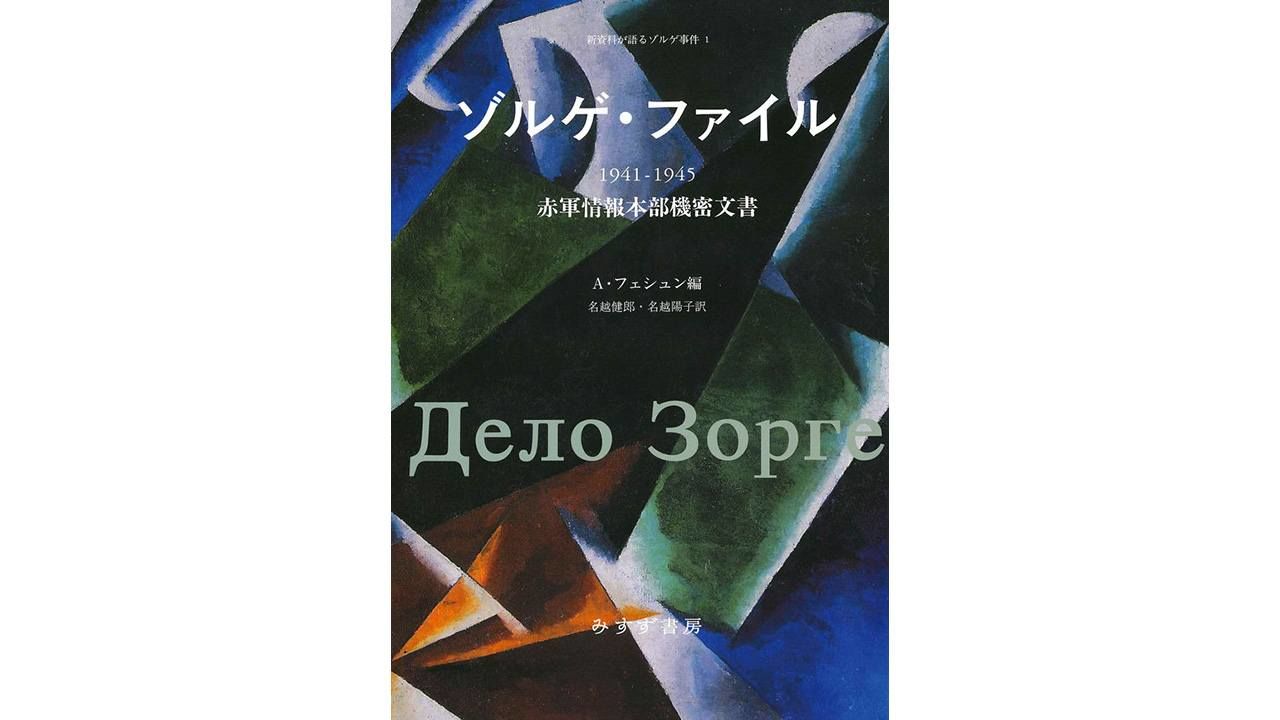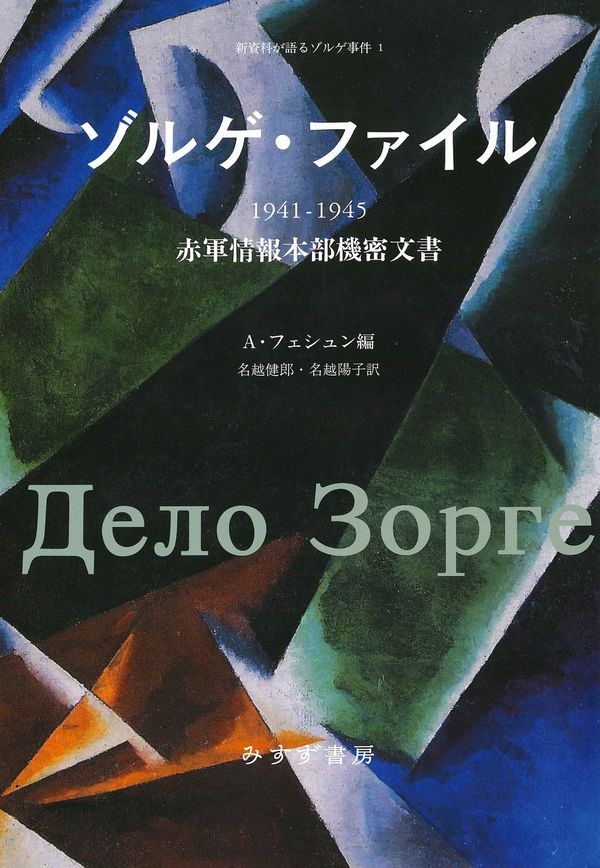
A Fresh Look at a Legendary Spy: New Japanese Translation of Richard Sorge’s Reports from Tokyo
History Politics- English
- 日本語
- 简体字
- 繁體字
- Français
- Español
- العربية
- Русский
Master Spy, Mistrustful Spymasters
Richard Sorge (1895–1944) was a Soviet spy, whose brilliant espionage in Tokyo in the late 1930s and beginning of the 1940s was often ignored by his masters in Moscow. The fascinating story of this charismatic agent has traditionally been told in Japan largely through the lens of the information extracted from him following his arrest by the Tokyo authorities in 1941.
A new book in Japanese is changing this perspective. Zoruge fairu 1941–1945: Sekigun jōhō honbu kimitsu bunsho (The Sorge Files, 1941–45: Secret Documents from the Soviet Main Intelligence Directorate) is a translation of the 2000 Russian-language work Delo Rikharda Zorge: Neisvestnye Dokumenty, edited by the researcher Andrey Fesyun. This publication finally brought to light many of the actual reports sent by Sorge to the Main Intelligence Directorate, or GRU, and Moscow’s evaluations of his product.
From the get-go, this collection provides startling discoveries. On December 28, 1940, Sorge relayed the following report to Moscow, based on information he had gleaned from German officials in Tokyo:
If the Soviet Union begins to develop activities against German interests, as happened in the Baltic [where Soviet forces had occupied Estonia, Latvia, and Lithuania in June 1940], the Germans could occupy territory on a line from Kharkov through Moscow to Leningrad.
Nazi Germany and the Soviets had signed a nonaggression pact in the previous year, but already Sorge was warning Moscow that Adolf Hitler’s forces could soon be attacking the Soviet Union. GRU officials who read his report added their own notes to it, calling it “doubtful material” but nonetheless something that “should be forwarded to Comrade Stalin for his review.” The spy’s intelligence was in fact reaching the Soviet leadership, although it was not viewed as particularly trustworthy.
Intelligence from a Top-Level Network
Sorge came to Japan in the guise of a journalist writing for a leading German newspaper. He developed a close relationship with the German ambassador to Japan, Eugen Ott, and succeeded in placing the former Asahi Shimbun journalist Ozaki Hotsumi, a member of Prince Konoe Fumimaro’s brain trust, at the lead of his group of Japanese informants, thereby accessing vital information on the inner workings of Japan’s politics.
Sorge’s journalistic skills were more than a cover, and he put them to work in the missives he sent to Moscow, such as this one sent on April 18, 1941, in which he skillfully sketched out a scene relating to the inking of the Soviet-Japanese Neutrality Pact just five days earlier.
Just when Otto [Ozaki’s code name in Sorge’s messages] was paying a visit to Konoe, the prince received a telegram from Foreign Minister Matsuoka [Yōsuke] on the pact with the Soviets. Konoe and all the others assembled there were in great joy at the news of the agreement, and Konoe immediately telephoned Army Minister Tōjō [Hideki] to let him know what had transpired. Tōjō did not appear to be particularly surprised by the news; nor was he elated or angered by it . . .
On May 30 of the same year, regarding the possibility of a German attack on the Soviet Union, Sorge filed a highly specific report covering his take on the German ambassador: “Berlin has informed Ott that the German invasion will begin in the latter half of June. Ott is 95% certain that war will break out.” Sorge followed this up with further warnings, but they were ignored by Moscow, which placed them in the category of unreliable reports. On June 22, though, when the Germans began Operation Barbarossa, the Soviets were plunged into chaos.
Once the war began with the Nazis, a primary Soviet concern was whether the Japanese would enter the conflict on the side of their German allies. Hitler was hopeful that Japan would step onto the battlefield against the Soviets, but Sorge had already perceived that this was not in the cards. As he wrote in an August 23, 1941, cable to Moscow, “Many Japanese soldiers are being issued short trousers—tropical uniforms, in other words—which suggests they are likely to be dispatched to the southern theater,” rather than to a northern front against USSR troops.
An Arrest that Changed the Course of the War
Just two months after this, though, Sorge found himself behind bars in Japan. The GRU operatives in the Soviet diplomatic mission in Tokyo filed a series of frantic, conflicting reports, claiming that “INSON [Sorge’s code name] is said to have committed suicide by pistol in a Japanese detention house, and it should be considered that he was shot to death in the course of interrogation,” followed by “No, he is still alive, and he and his team have been sentenced to life imprisonment for espionage for the Soviet Union.” In reality, the spy was still alive. It was in 1943, eight decades ago, that he was sentenced to death; in November 1944, along with Ozaki Hotsumi, he was executed in Tokyo’s Sugamo Prison.
The files covered in Fesyun’s book include a range of details—from the mundane, such as the monthly accounting reports Sorge filed with Moscow, his complaints about a shortage of funds to cover the activities of his cell in Tokyo, and a description of the gift he sent to his wife in the Soviet Union, to the fascinating, like the way in which his radio operator Max Clausen lost his passion for the work and began deleting portions of Sorge’s reports, filing truncated, inaccurate versions with the GRU authorities. They also shed light on the presence of other spies in Tokyo at the time, including women embedded in the German and American diplomatic outposts.
Many readers may consider this a challenging book to take on, consisting as it does of more than 300 pages of reports filed by Sorge during his time in Tokyo. The Japanese edition, though, comes with copious and detailed notes on the files, along with an explanatory preface penned by Nagoshi Kenrō, a former Jiji Press journalist who is now a professor of Russian and media studies at Takushoku University, and an illuminating afterword by Andrey Fesyun, the Moscow State University academic who edited the original Russian-language collection.
The unmasking and capture of Richard Sorge and other members of his cell dealt a serious blow to Japan’s ties with Germany in the early years of World War II. In this light, Fesyun’s observation that “with his own arrest, Sorge managed to stave off deeper ties between Berlin and Tokyo, which arguably saved the Soviet Union from a crisis in which it would have found itself pinned between these two powers” is worth considering.
Russian President Vladimir Putin is said to have quipped that as a high-school student, he wished he would one day become a spy like Sorge. In the memoir he wrote while in Sugamo Prison, Sorge stressed that the Soviet Union was not an aggressor state; one wonders what he would have made of Russia’s current leader.
(Originally published in Japanese. Banner photo: The cover of Zoruge fairu 1941–1945. Courtesy of Misuzu Shobō.)
